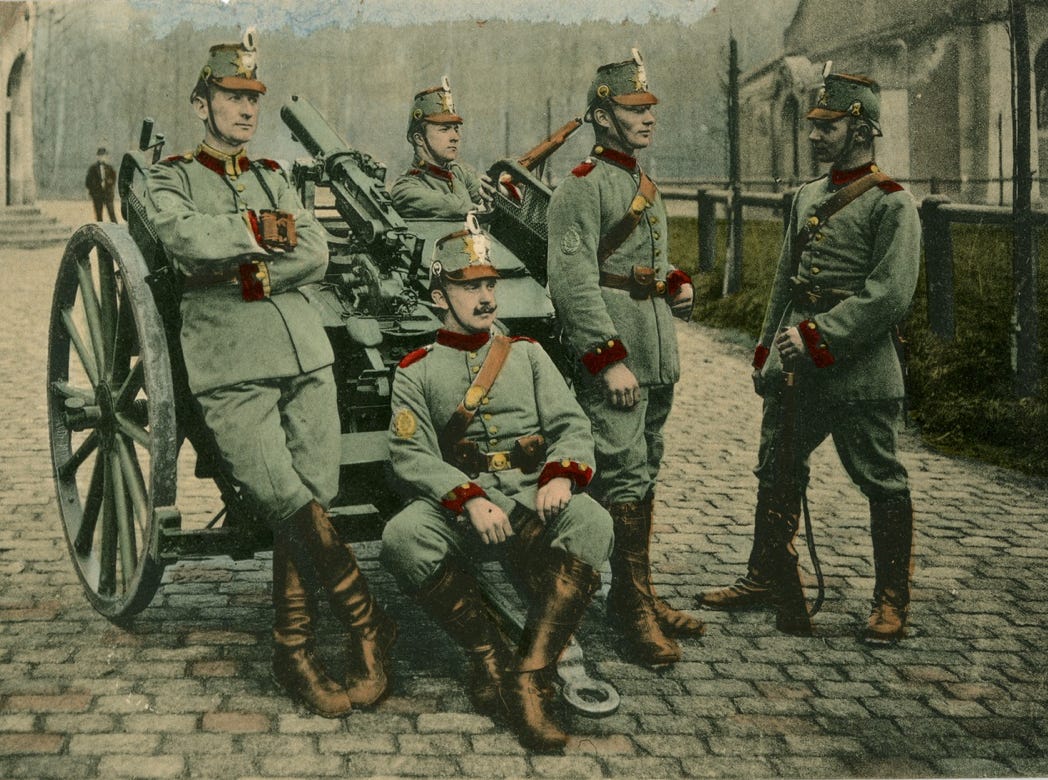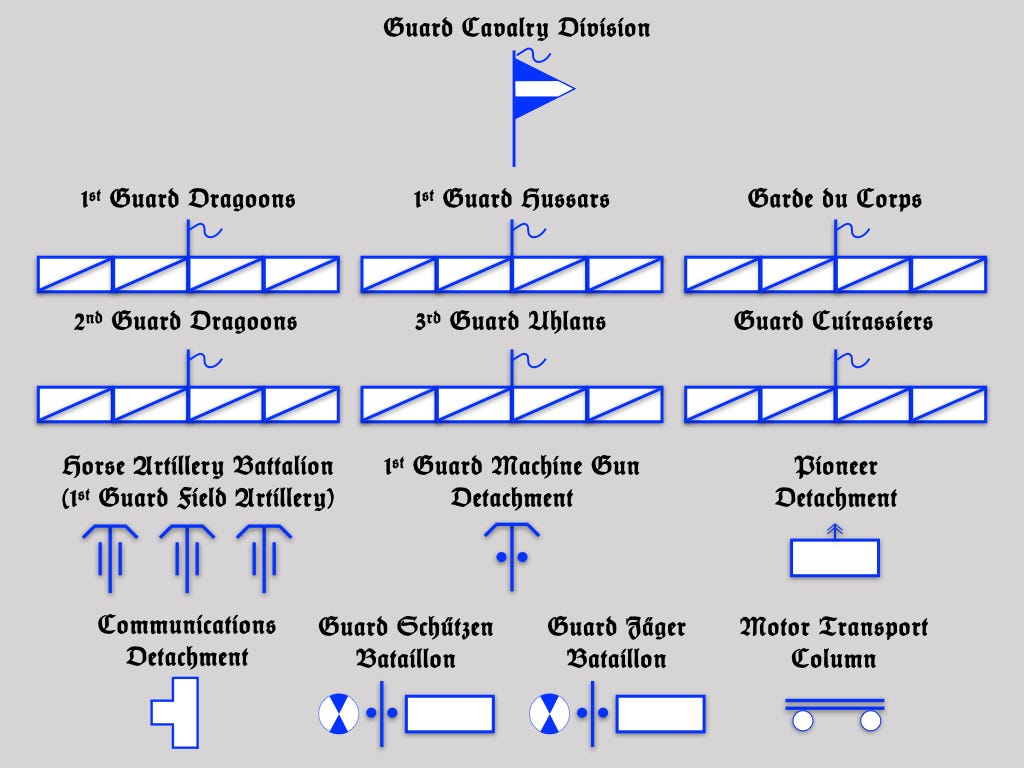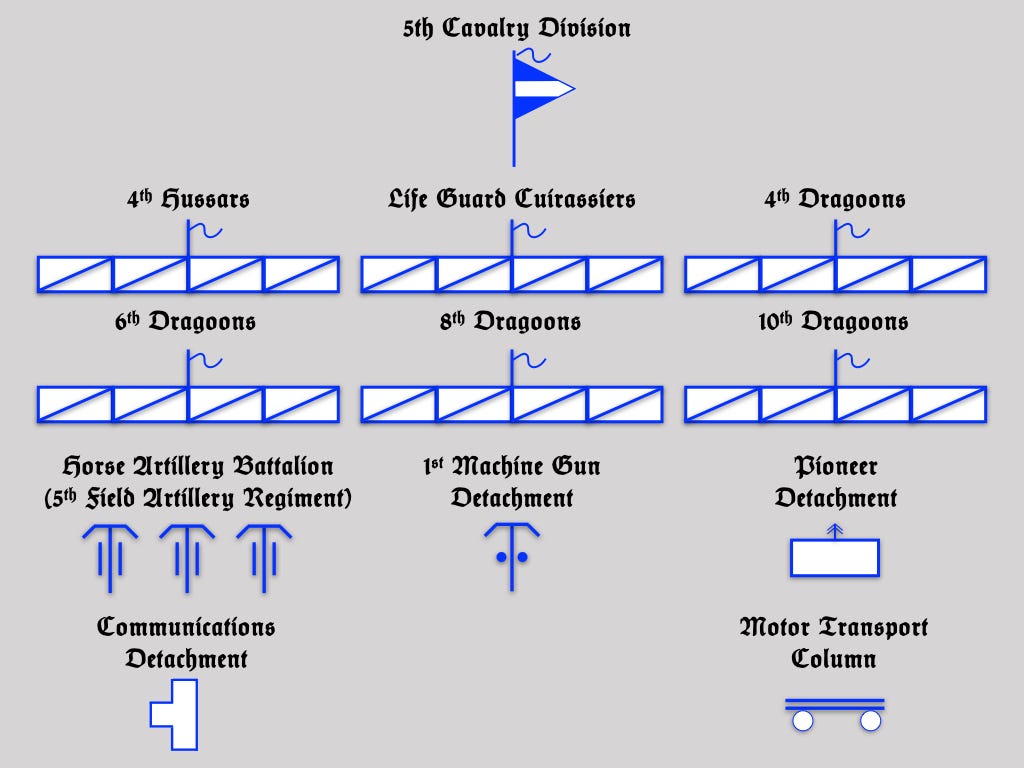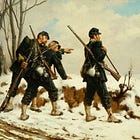In August of 1914, the German Empire mobilized 110 active cavalry regiments. Of these, 54 reported to infantry divisions, where they patrolled in support of the immediate actions of those formations. The other 66 cavalry regiments found homes in commands of a very different sort, the 11 cavalry divisions that, made up mostly of cavalry units, performed missions of operational significance on behalf of the senior military authority on each front.
In the west, 10 cavalry divisions ranged ahead of the seven field armies under the command of the Great Headquarters (Großes Hauptquartier). In the east, the 1st Cavalry Division covered the gap between the main body of the Eighth Army and the fortress of Königsberg. On either front, the services asked of cavalry divisions required the ability to hold important pieces of ground, if only for brief periods of time. To this end, each cavalry division employed three batteries of horse artillery, a horse-drawn machine gun detachment, a detachment of combat engineers, and, in many instances, one or more battalions of Jäger.
Each Jäger battalion consisted of four rifle companies, a six-gun machine gun company, and a company mounted on bicycles. When serving in places (such as northern France and Belgium) that were well provided with roads, the bicycle companies could follow in the wake of the horsemen of cavalry regiments. However, to move the rifle and machine gun companies, the Jäger battalions often made use of the trucks of the motor transport column belonging to each cavalry division.
In August of 1914, a total of eighteen active Jäger battalions were serving in the armies of the German Empire. Of these, one was assigned to the 1st Cavalry Division of the Eighth Army and thirteen with the ten cavalry divisions in the west. (When not under the operational control of a particular cavalry division, each of Jäger battalions working with the cavalry reported to one of the four “higher cavalry commanders.”1 Thus, on 18 August 1914, two of the five Jäger battalions of the 1st Higher Cavalry Command were under the operational control of the Guard Cavalry Division.2 The three remaining Jäger Battalions remained at the disposition of the 1st Higher Cavalry Commander, Baron von Richthofen.3
Sources:
Germany, Reichsarchiv, Der Weltkrieg von 1914 bis 1918: Band 1, Die Grenzschlachten im Westen (Berlin: E.S. Mittler, 1925), pages 664 to 666.
Friedrich von Merkatz, Geschichte der Maschinen-Gewehr Abteilung Nr. 1 (Zeulenroda: B. Sporn, 1936)
For Further Reading:
A “higher cavalry commander” (Höherer Kavallerie Kommandeur) was a small headquarters that coordinated the actions of two or three cavalry divisions.
The Guard Schützen Battalion was, for all purposes, whether organizational or operational, a Jäger battalion.
Major General Baron Manfred von Richthofen (1855-1939) was a cousin of the soon-to-be-famous flying ace of the same name.









My great grandfather was in the Guard Cuirassiers during WW1!
Question; weren’t some of these jager/ cavalry formations converted/ retrained to become the “sturm battalions”?